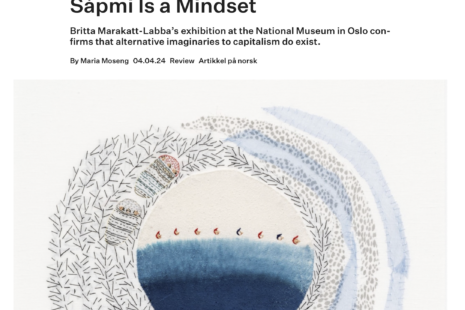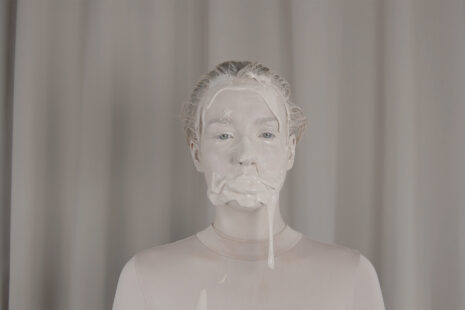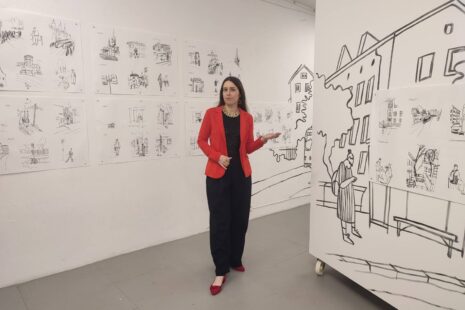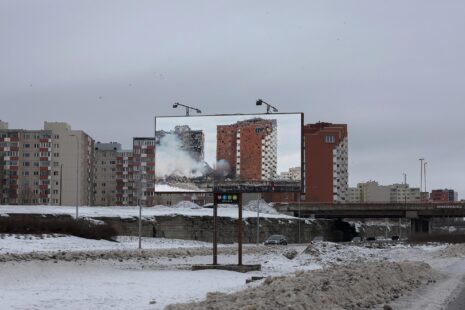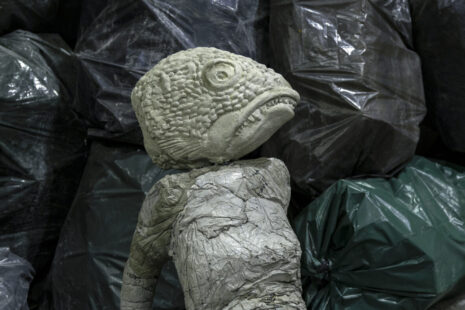Yael, you started your academic career in quite a different area – biology – before turning to architecture. Or are they even so different? I know many artists, who have started as law students. Can you see some kind of logic here? Tell us about your own story!
There was no logic studying biology before architecture, the only reason was that I wished to please my father, who expected me to help him in his little factory that produced chemicals for the textile industry in Israel. Biology was a preferred territory compared to chemistry, which could be more directly related, but good enough for the knowledge I needed to gain, yet, included other fields of interest I preferred. It was following a path that also reflected – in the family context – being cleverer, and intellectually more able, if one can handle studying math, chemistry, physics, or genetics than studying art or architecture.
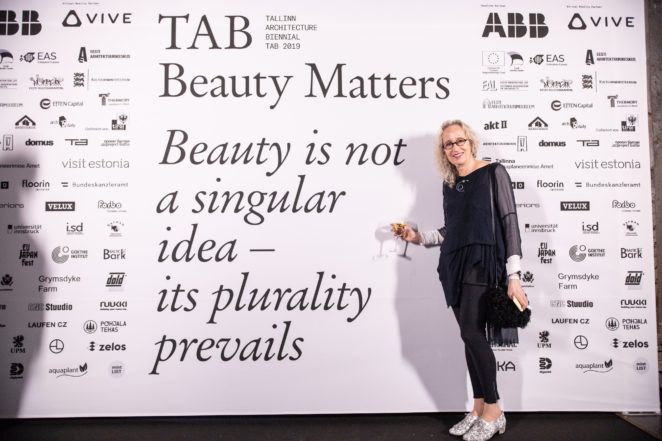
Yael Reisner at Tallinn Architecture Biennale
Your research work in architecture embraces disciplines of neuroscience and mathematics – “to understand beauty’s relevance to human life and knowledge,” as you have said. Can you recall the first time you noticed something is beautiful in its theoretical approach? How did your interest in aesthetics and visuality develop?
My interest grew out of anger, as no one around me, while studying architecture in Jerusalem at the Art Academy, had any interest in beauty or aesthetics – Design by Climate was hot then – and later on, by the late 1990s, when I was teaching already architectural design at the Bartlett, I felt the same. It was only when I studied at the AA- the Architectural Association in London, in the early-mid 1980s, that there was a genuine interest in aesthetics, but after MOMA’s Deconstructivism exhibition in 1988, philosophy took over as the leading authorial voice, instead of one’s subjective decision making, and that short decade of aspiring to beauty was over.
I was always interested in visual thinking. I believe I was born with a sensitive eye.
The environment I was surrounded by always mattered to me, similarly to the objects I used, or what I chose to wear. Yet, for whoever I was surrounded by, the content was artificially separated from form and was perceived by far more important.
Architecture, like a sculpture or an installation, belongs to a three-dimensional sphere of art, giving an opportunity to go inside of it – both in a direct and indirect sense. How about putting “2D art inside of 3D art”, does this give at least one dimension into the bargain? Like hanging a painting on a wall in well-enough designed interior or adding a mural to the ideally composed exterior. What are the rules and where are the limits?
Our emotions could be equally triggered by visual work, in 3D or 2D, enabling one having a pleasurable experience of beauty. I don’t think there are any rules. I took part in architectural competitions a few times, where it was required for an architect and an artist to collaborate, so as to have artwork to make the architecture enhanced by art. I don’t think it’s a guarantor for a greater experience. Politically, ambition is often to give work to both, architects and artists, and traditionally, there is an expectation that art brings in the emotional experience. I don’t believe so, as we know some architecture trigger human’s emotions. When I collaborated with artists, I made sure the collaboration will turn into one coherent piece of work, where the experience will be enhanced due to that collaboration, and I think it worked that way, as happened with A Room for London, in 2010, when I worked with the artist Dee Ferris, and at the Bologna Shoah Memorial, in 2015, when I collaborated with the artist/photographer Ori Gersht.
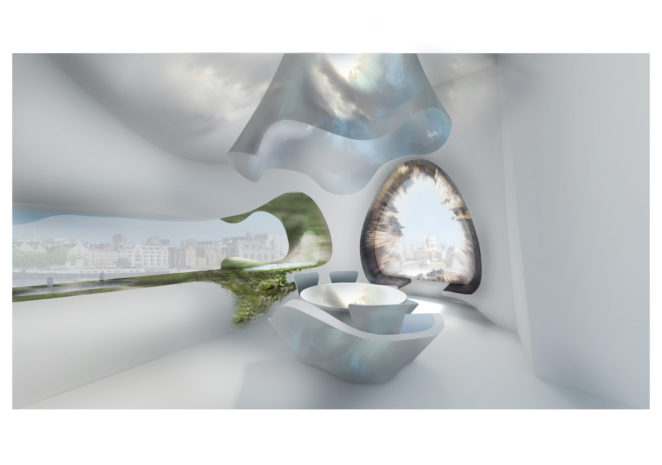
Yael Reisner Studio – Room for London
Back to beauty. You have said that it is the post-digital age that plays a role in turning the tables and making beauty actual again. Can you explain it more closely? For me it seems that the digital still enjoys its glory. Where exactly does the afterlife appear?
“Beauty” and the “post-digital age” both rely on human judgement. The term “post-digital” was first heard around the year 2000 in relation to music, as the novelty of computer-generated music faded. By 2006, visual art started to humanise digital technologies as a result of creative encounters between art, science, technology and human consciousness. By 2016 the post-digital became a category in architecture. Architects are the slower ones… The use of “post-” is somewhat misleading, as digital artists’ interest as designers have been evolved, rather than abandoning digital exploration. A good example of these new aesthetics is Mark Foster Gage’s work: an independent, mysterious architecture with great theatricality, that embraces today’s anthropocentric context.
Since the 1990s, digital architects have continued to influence architectural discourse – not only because of changes in fabrication, the evolution of CNC machines to 3D printers and automation but also to establish meaning. Yet the term ‘post-digital’ brought a wider community of architects under this umbrella, who mostly use digital systems to process rather than generate a design. Subjectivity plays an important role in Postdigital architecture and amongst those who aspire to beauty, hence there is no conflict between the two, as was since the 1940s, when servicing society objectively was the elevated agenda.
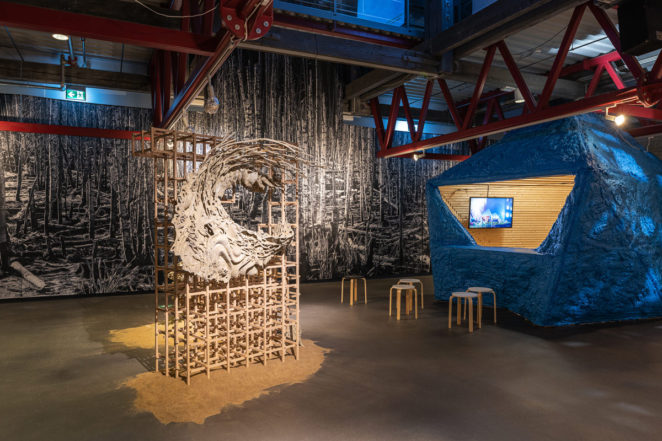
How did you choose the participants of the curatorial exhibition, what were the main principles?
I was searching for architects who can come up with fresh ideas and perform those ideas aesthetically in a profound way, these were the leading principles of my criteria. I was looking for architects who produce attractive, good architecture, and who think independently. I checked websites, I talk to different architects and took my decisions; two Estonians, and six from the international scene. It was important to me to include one from Japan, as Japanese have an incredible deep visual culture, which stands out in architecture, including a particularly rich exploration of the notion of habitation, that was the lens for beauty in our biennale. I wished to have an Australian architect since I think architecture in Australia is not known enough, yet brilliantly progressive and interesting. I wish to have a presentation of AR and VR at the exhibition, in an original way, and I think I managed to do that, thanks to Elena Manferdini (AR experience), Space Popular (VR experience), and Paula Strunden, who is an architect/artist focusing at immersing VR / Mixed Reality experience. The reasons I was interested in exhibiting that experiences were the presence of the hi-tech local culture in Estonia as well as research and industry – I thought those exhibits will explore new opportunities in architecture.
In the participants’ list there is Arne Maasik, who is a photographic artist now, as well as Nathan and Jakob Tulve, who act as audio-visual artists. Please tell about their contribution to your idea – what do they say about architecture, beauty, digital art etc?
I was interested in exhibiting 8 installations, who were all to do with habitation, supplying us material to discuss beauty, in a street context, along the large main floor of the Estonian Architecture Museum, characterised by its high unique section.
I was interested in coming with new imagery, new experience and new atmosphere, of today’s urban streets; today/tomorrow, which should be different than the urban context of the 1930s, as was expressed in Metropolis’s images, for example. Thus, one enters the exhibition through 30 birch trees, a woodland, as there will be more of those in the future streets, being surrounded with nature, outdoors and indoors, reducing cars and petrol use, as a message for the reduction of co2 footprint, as well as raising human’s wellbeing, having more fresh air, more o2, and gaining higher humidity thanks to the presence of plants indoors as well, and growing one’s vegetables, etc. having more fauna and flora surrounding humans’ life. That’s why I decided to wrap up the street with Arne Maasik’s enlarged photograph, ending the street at the forest.
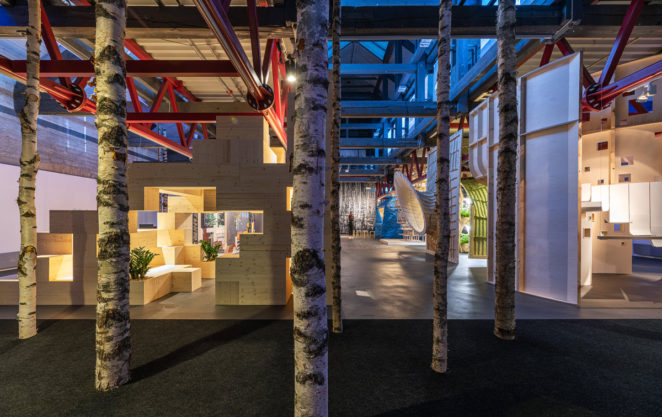
The composed soundscape was added to enhance these association and experience of new streets, with city sounds along with the woodland sounds, the tram along with birds, crickets, and frogs.
I don’t think architectural exhibitions should be too quiet, as architectural environments are not mute.
How did you experience art here in Estonia? Did you go to see some other exhibitions, visit a concert, see a film or buy a book?
The most inspiring Estonian culture for me is its high-tech thinking and research. I met different people from that territory, after meeting Prof. Alvo Abloo from Tartu University, who introduced me to its maverick thinkers, makers and inventors. One of them is Prof. Indrek Must, with whom I managed to carry on and introduce to the exhibition with the Grow Grow piece; an installation inspired by his scientific work, culminating at the first-ever artificial plant robot, that is inspired by nature – specifically by the Passiflora climber’s tendrils – as other exhibitors at the exhibition, including myself…
… and what about TAB itself? Your highlight-moments?
I think the 2-days symposium at the TAB’s opening week, was highly successful.
I particularly enjoyed the scholars talking in duos, about the return of beauty, and with compelling confidence.
Thus, Taylor Enoch, talked about Beauty From a Neuroaesthetic Point of View: Note on Architecture, Ron Aharoni, the Mathematician, characterized beauty, as mathematicians never stopped discussing beauty, and claimed mathematicians and poets share a desire for beauty, the poetess Maria Lee talked about the struggle for beauty in our Mental Space believing that beauty is about honesty, and Graham Harman, most influential contemporary philosopher on the Arts, talked about Why Architecture and Beauty Need Each Other. The whole symposium had a great tempo, energy sheer interest revolving around Why Beauty Matters. One will be able to listen to it on the YouTube ECA channel. the Estonian Centre of Architecture, who produced TAB 2019.
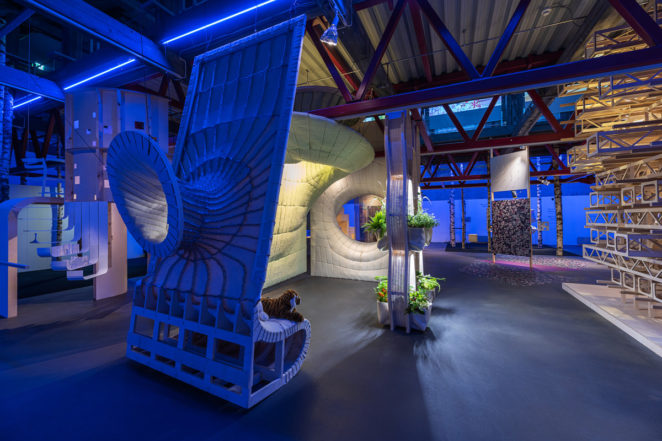
Yael Reisner is a registered architect, designer, academic, researcher and writer. She has a PhD in architecture from RMIT Melbourne, Australia, a Diploma from the Architectural Association in London, and a BSc in Biology from the Hebrew University, Jerusalem. Born in Tel Aviv, she has lived in London since 1990, where she is the director of Yael Reisner Studio, an architectural research-led practice founded in 1988.
Text: Triinu Soikmets
Photos: Tõnu Tunnel, Evert Palmets, Yael Reisner

